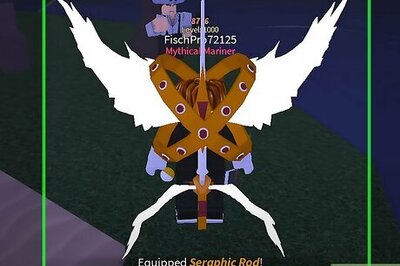
views
Making albums of newborns is no big deal in the days of digital cameras. Parents are an overzealous lot wanting to click every interesting phase of the child’s growth for posterity. The four-legged little ones are no different today, and it’s not hard to imagine pet owners beginning to have pet albums.
This is when Surya Dinkar, city-based pet photographer, comes into the picture. “Having done wildlife photography extensively, I moved to pet photography seven months ago. Initially, I would to do it for friends and a few of my acquaintances. Later, when I saw people in the city growing fonder of their furry friends, I thought pet portrait photography was what I should do,” says Surya.
It is easier working with the humans — given that you can control their expressions and movement, but with animals, it can be quite a task. “One first needs to be good with animals and love them in order to understand their psychology. They are very moody and sensitive,” she adds. Ask her how she gets pets to pose for her, and she says, “I first spend some time with them to make them believe that I am not going to harm them. At times, I give the pet a toy, he likes, to keep him busy during shoot.”
It’s no big secret that pet photography is challenging. With pets running all over the place, it is difficult to control them and make them sit. “I love spending time with animals and so it comes easy to me,” she adds, recalling one challenging photo shoot. “A client of mine wanted me to shoot a bunch of pugs together striking the same pose. They just wouldn’t look at the camera at the same time, and would often run off somewhere,” she says, adding that it took a lot of time to get them to look at the camera.
Having managed over 50 clients, Surya says there are a couple of do’s and don’ts of pet portrait photography. It is essential to capture the pet in their element. “You cannot take a pet to a studio and photograph it. Pets tend to become very conscious of the space and so it is important that the shoot is done in the client’s house,” she says. The technical aspect one needs to keep in mind, she says, is usage of natural light. “Pets are usually scared of flash light. So natural light makes them comfortable. The other thing is one must always get down to their level and click them. They get very intimidated when someone tries to capture their expressions and movements while from a height. It’s important to see things the way they do,” she adds.
Pets have their mood swings and can also get cranky at times. Then, getting them to pose becomes nothing less than a herculean task. “I have never had any bad experiences so far. The pets have been really friendly. The cutest thing most of them do is come forward and lick the camera lens,” she smiles.
Surya Dinkar can be contacted at [email protected]. For details, visit www.facebook.com/suryadinkarpets
















Comments
0 comment